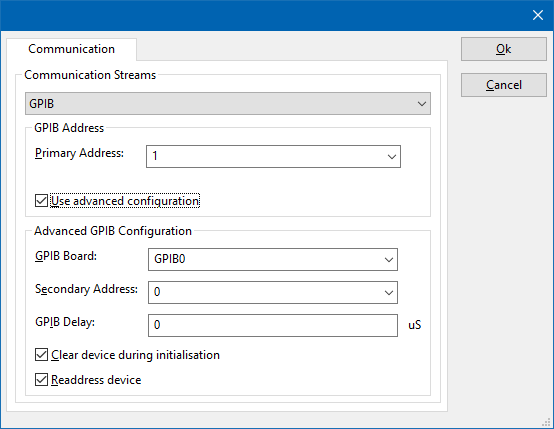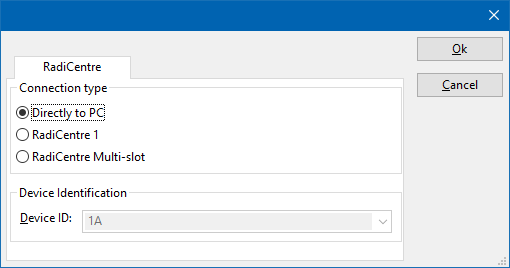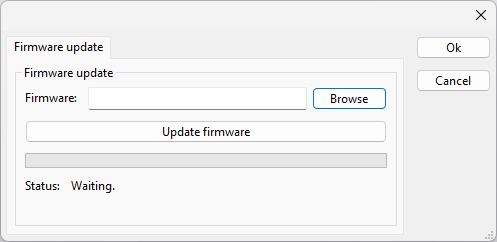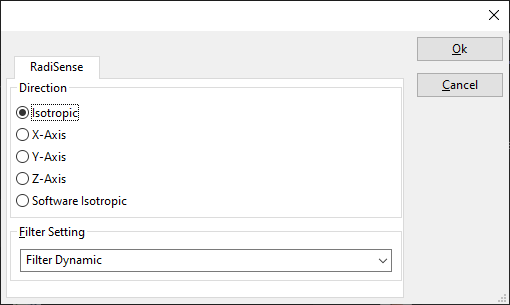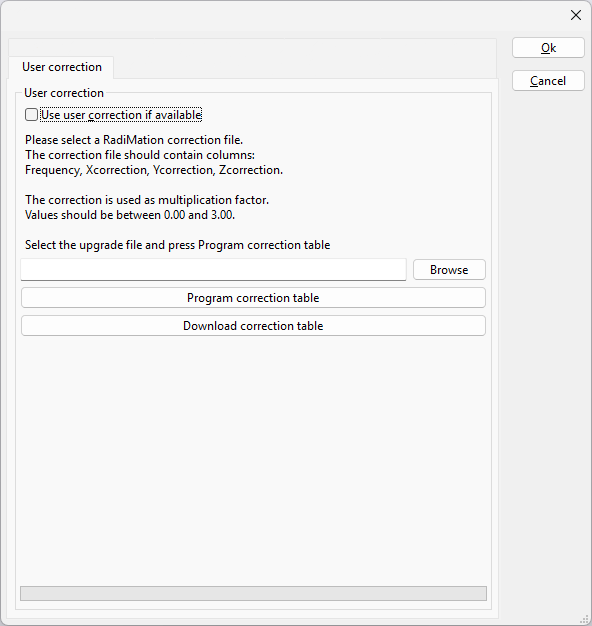RadiSense2000DeviceDriverConfiguration: Difference between revisions
No edit summary |
(calibration -> correction) |
||
| (3 intermediate revisions by 2 users not shown) | |||
| Line 1: | Line 1: | ||
<noinclude>{{Note|This page is used to show the configuration of the [[Raditeq]] RadiSense 20xx device drivers. This page can now easily be embedded on all relevant device driver pages.}}</noinclude> | <noinclude>{{Note|This page is used to show the configuration of the [[Raditeq]] RadiSense 20xx device drivers. This page can now easily be embedded on all relevant device driver pages.}}</noinclude> | ||
{{:DeviceDriverCommunicationTab}} | {{:DeviceDriverCommunicationTab}} | ||
{{:DeviceDriverRadiCentreTab}} | {{:DeviceDriverRadiCentreTab}} | ||
{{: | {{:DeviceDriverFirmwareUpdateTab}} | ||
{{:DeviceDriverRadiSense2000Tab}} | {{:DeviceDriverRadiSense2000Tab}} | ||
{{: | {{:DeviceDriverRadiSenseUserCorrectionTab}} | ||
Latest revision as of 09:28, 20 November 2025
| Note: | This page is used to show the configuration of the Raditeq RadiSense 20xx device drivers. This page can now easily be embedded on all relevant device driver pages. |
On the Communication tab, the desired communication method can be selected and configured. Depending on the selected method, additional relevant settings are shown and can be configured.
| Selects the medium or method that should be used to communicate with the device. Depending on the capabilities of the device this can be one or more of:
Depending on the selected communication stream, additional configuration parameters can be configured. See the Communication Settings in Chapter 15, on how to configure each of these communication streams. |
There are several methods in which the RadiSense2000DeviceDriverConfiguration can be connected to the PC. The RadiSense2000DeviceDriverConfiguration can for example be connected directly to the PC, or through a plugincard in a RadiCentre 1 or a multi-slot RadiCentre. More information on how to use the RadiCentre is present in the product manual of the RadiCentre. The settings on the RadiCentre tab can be used to specify how the RadiSense2000DeviceDriverConfiguration is connected.
When the RadiSense2000DeviceDriverConfiguration is connected to a multi-slot RadiCentre, also the slot number in which the plugincard is fitted, should be specified.
| Specifies that the RadiSense2000DeviceDriverConfiguration is connected directly to the PC, without the use of a RadiCentre. |
| Specifies that the RadiSense2000DeviceDriverConfiguration is connected to a plugincard that is fitted in a RadiCentre 1. |
| Specifies that the RadiSense2000DeviceDriverConfiguration is connected to a plugincard that is fitted in a multi-slot RadiCentre that also can be manually controlled using the display on the front of the RadiCentre. The slot number in which the plugin card is mounted can also be selected. |
| Specifies that the RadiSense2000DeviceDriverConfiguration is connected to a plugincard that is fitted in a multi-slot RadiCentre Ultra. This RadiCentre Ultra has no display, and can only be used when remote controlled. |
The settings on this RadiCentre tab, only specifies if and which RadiCentre is used. The communication settings on the Communication tab specify the connection settings to communication with the measurement device.
The configuration on the Communication tab should be configured depending on the outgoing connection from the PC. Thus if Directly to PC is selected, the communication settings should be configured as what is actually used between the PC and the RadiSense2000DeviceDriverConfiguration itself. If RadiCentre 1, RadiCentre multi-slot or RadiCentre multi-slot Ultra is selected, the communication settings should be configured as what is actually used between the PC and the RadiCentre. In the configuration where a RadiPower is connected with USB to a multi-slot RadiCentre, which is connected by GPIB to the PC, the communication settings of the RadiPower device driver should thus be GPIB.
If the RadiSense2000DeviceDriverConfiguration is for example connected to slot 3 of a multi-slot RadiCentre which has IP address 192.168.178.95 and is connected by LAN to the PC, the following settings should be configured in the device driver of the RadiSense2000DeviceDriverConfiguration:
- RadiCentre tab
- Connection type: RadiCentre multi-slot, using as slot number: 3
- Communication tab
- Communication Stream: VISA
- LAN: 192.168.178.95
The Firmware update tab can be used to update the firmware of the RadiSense2000DeviceDriverConfiguration.
| Specifies the filename of the firmware update file that should be used to update the firmware of the measurement device. |
| Allows to select the firmware update file. |
| Starts the actual firmware update. First some checks are performed, and if those checks are successful, the actual firmware update is performed. |
| Shows a message during the firmware update, indicating the performed action and the actual status. |
| Warning: | The firmware update can take a few minutes. During the actual firmware update the window is disabled, and cannot be closed. It is possible that Microsoft Windows shows messages that the RadiMation® software is not responding. Ignore those messages and do not kill, abort or end the software. Also do not disconnect the connection between the RadiSense2000DeviceDriverConfiguration and the PC, while the firmware update is being performed. |
After the firmware update is completed, a messagebox will be shown that the firmware update has been completed successfully. In the case that an error has occurred, this will also be shown. In case that an error has been detected, it is strongly suggested to directly use the RadiMation® Error Report function to report the error to Raditeq.
The RadiSense tab can be used to configure the specific settings of the RadiSense2000DeviceDriverConfiguration.
| If the field strength of a specific single axis or an isotropic value should be measured. |
| The filter that should be used during the measurements. |
The User Correction tab can be used to upload the data of an user correction into the RadiSense2000DeviceDriverConfiguration. This correction data can be used by the probe internally to to correct the measured values.
| If this option is activated, and if a user correction is stored in the probe, then the correction will be used by the probe itself, to internally correct the measured value with the user calibration data. If this option is off, no correction of the measured values will be done. |
| Allows to select the correction file that contains the user correction data of the RadiSense2000DeviceDriverConfiguration. |
| Starts the actual uploading of the correction table. First some checks are performed, and if those checks are successful, the actual uploading is performed. |
| Downloads the user correction table from the probe, if available. Then displays a 'Save As' prompt to save the table as a RadiMation correction file. |
|
